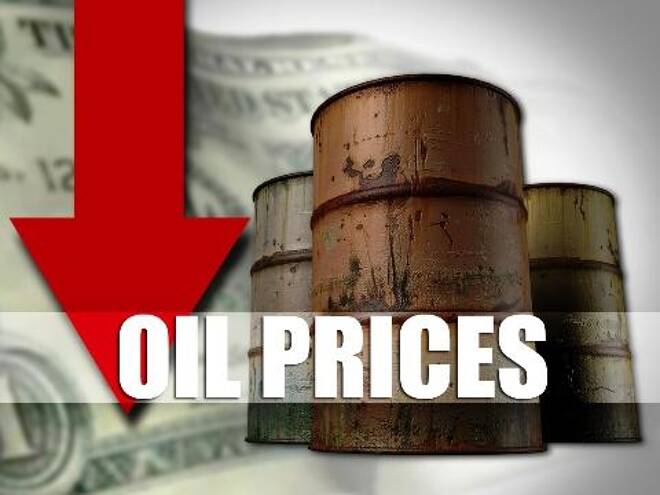Advertisement
Advertisement
Is OPEC Keeping Up Production To Drive Down Prices
By:
Crude oil continued its downward trend giving up 67 cents in the Asian session to trade at 85.08 while Brent oil diverged slightly to gain 4 cents to
Crude oil continued its downward trend giving up 67 cents in the Asian session to trade at 85.08 while Brent oil diverged slightly to gain 4 cents to trade at 88.72 with the spread remaining uncomfortably close. Broad weakness in international oil prices remain as markets continue to take negativity over extended supply ease and expectations that consumption in the last quarter of 2014 would stay lower than normal as demand from China and EU takes a hit. Meanwhile, in the very near-term, demand from the US is also seen muted amidst seasonal factors which is getting escalated by continued drop in refinery utilization while production stays higher. As per other major developments overnight, news reports from Reuters showed, Saudi Arabia has privately told oil market participants it can accept oil prices between $80 and $90 a barrel whereas Kuwait’s oil minister last Sunday notified that OPEC was unlikely to cut production to support prices in its November meeting.
While there were no major developments in oil yesterday, today also movement might remain ranged as markets lack any major data variables whereas traders await weekly inventory report from the US. Iraq continues to drop the price of its oil as it increases production. In past years OPEC would reduce production to support prices, but this year many OPEC nations are increasing production to just sell more at lower prices as the US shale production increase has become a factor. Libya is steadily increasing its production after several years of violence had reduced their production levels much lower. Many foreign nations are worried now that the US has become a net producer of oil and is steadily increasing its exports and changing laws that allow the export of many varieties of oil products. Shale production is very expensive and many nations are hoping that lower prices will combat the growing shale production in the US and other nations. The U.S. is producing more crude oil than it has in nearly 30 years. Production is forecast to reach 9.5 million barrels a day next year, which would be the most since 1970, according to the U.S. Energy Information Administration. The boom is a result of drilling shale rocks through the techniques of fracking and horizontal drilling, and the question is how high oil prices need to be in order to make it profitable. Other factors include a weakening global demand for oil and the increase in Libyan oil drilling over the summer (the troubled nation managed to boost its output from 200,000 barrels a day to 900,000 by the end of September), according to EIA analyst Michael Leahy.
Traders will closely monitor this week’s EIA inventory report due tomorrow. Initial forecasts call for rise in crude stockpiles by around 2.5 million barrels which is further seen extending the downside pressure on the commodity. As said above, on one side US oil production continued to rise, refinery utilization fall and demand stays muted, traders might see pressure coming from the product side as well which could further act negatively on prices. Intraday trend remains ranged with bias continuing on the bearish side.
About the Author
Barry Normanauthor
Advertisement
